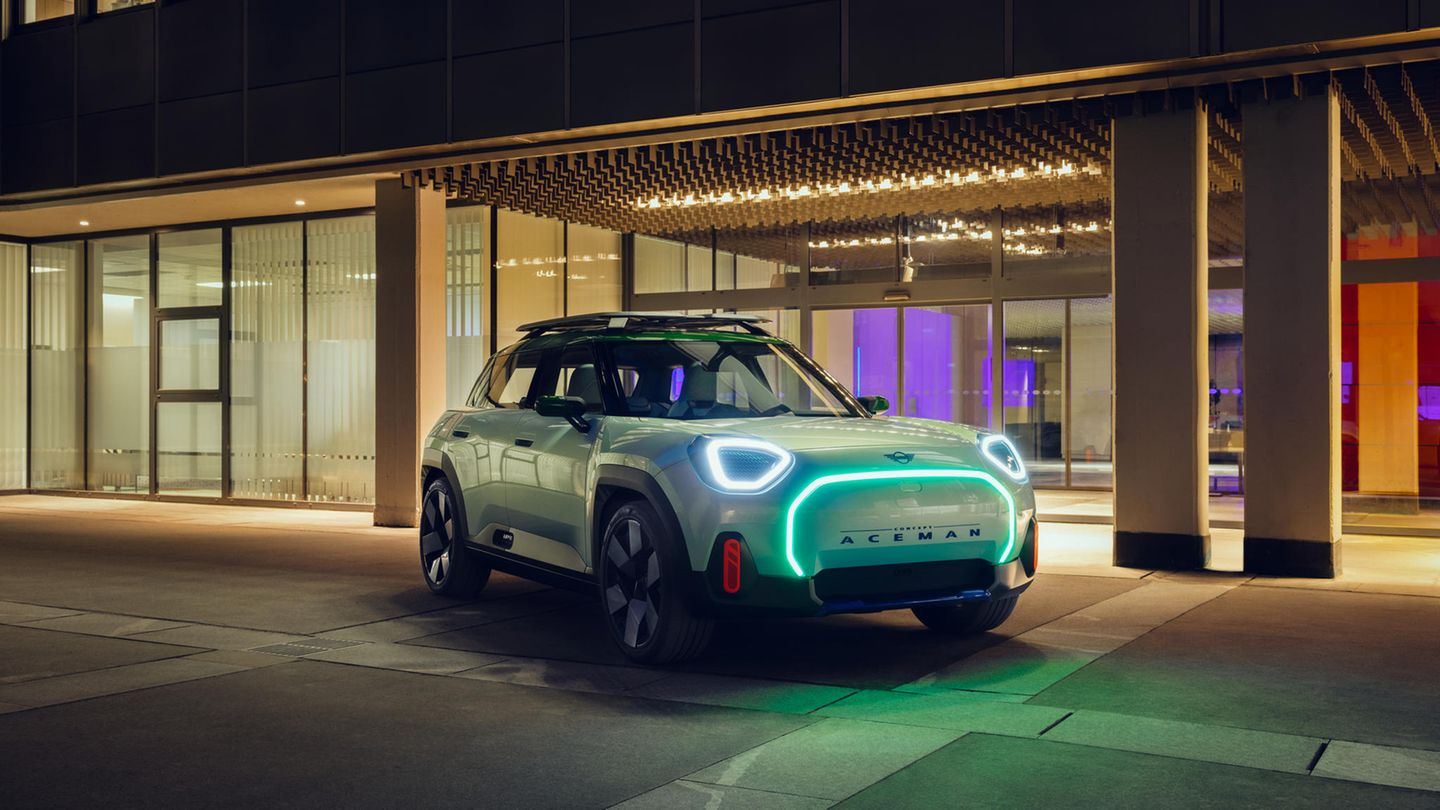The near-series study of the Mini Concept Aceman shows what the electric crossover will look like. It relies on typical Mini features and ranks in the category of city cars. The popular leather seats and the chrome elements should be a thing of the past.
The new Mini generation has been developed jointly by BMW and the Chinese cooperation partner Great Wall for more than two years. After the current Countryman has become an integral part of the portfolio as a mid-range SUV with the corresponding interior variability, there will be a second, significantly smaller crossover in the new model family, which is intended to conquer inner cities around the world – electric, of course. The study of the Mini Aceman, a 4.05 meter long electric SUV that hits the heart of urban customers, offers a close-to-production look at this. “The Mini Concept Aceman provides a glimpse of a completely new vehicle that will occupy the position between the Mini Cooper and the Mini Countryman in the future model family,” says MINI brand boss Stefanie Wurst, “this concept vehicle reflects how Mini is moving in the direction of of a fully electric future and what the brand stands for: an electrified go-kart feeling, an immersive digital experience and a strong focus on a minimal ecological footprint.”
The exterior design is typically Mini and yet again significantly more puristic than before. It is surprising that Mini seriously wants to offer the SUV, which is just over four meters long, as a five-seater. You certainly don’t want to expect passengers of whatever size to have the back seat for three people. However, two people can sit comfortably in the front and rear for these dimensions, because after all the Aceman is not intended as a long-distance crossover. With a width of 1.99 meters, it stands sturdily on its four 20-inch tires, has good proportions and even looks like an off-roader with some of its body details. “The purely electric vehicle concept makes it possible to steer the design more towards the traditional basic values of Mini in the sense of the principle of creative use of space,” says Mini chief designer Oliver Heilmer, “this results in models that take up little space on the road while offering more comfort, more versatility and more emotion inside than ever before.”
Mini relies on eye-catching LED lights instead of leather and chrome
The Aceman interior is even more spartan than the exterior. The cockpit is dominated by a large round instrument on which all functions are displayed. However, it can be assumed that the later production model will at least have a head-up display behind the steering wheel with the most important information for the driver and will even use larger parts of the dashboard and windshield as a projection surface in the medium term. Bitter for most Mini fans: the characteristic toggle bar with the most important direct switches is retained, but the popular leather seats, previously used in the particularly elegant models, are to be deleted without replacement. In the future, the occupants will only be able to sit on textile and plastic seats, even with the highest equipment levels. The study is also equipped with motley knitted seats in recycled textile. Perhaps those responsible for Mini will still opt for the optional leather interior in view of the current equipment quotas, spoiled customers and contemporary interior chic, because the current design of seats and door panels is more reminiscent of the models and representation of the first Renault Twingo generation. However, the days when the interior of the Mini models were decorated with chrome and leather seem to be over for good. Not all mini fans will be happy about that.
The LED lighting units at the front and rear are more striking than ever in the study of the Mini Aceman. However, the British Union Jack-style light signature at the rear is a thing of the past. Instead, there are striking light elements that Mini customers can vary from the vehicle if they wish. In the concept model, the upper part of the indicated radiator grille is also used as a variable display area. The implied Union Jack is only available with the roof rack, which, in addition to the implied underride protection, is intended to give the future model more lifestyle character.
With regard to the drives, Mini is still surprisingly covered more than two years before the market launch. However, it is no longer a secret that the electric versions will have either front or all-wheel drive. In addition to the around 180 hp Mini Cooper Aceman, there could be the around 225 hp Cooper S and a around 300 hp John Cooper Works as a four-wheel drive version. The Mini disciples can therefore already look forward to this. The battery packs should have sizes between 40 and 60 kWh, which would allow ranges between 350 and 500 kilometers without charging stops. The new Mini generation will start at the end of next year.
Source: Stern
I am a 24-year-old writer and journalist who has been working in the news industry for the past two years. I write primarily about market news, so if you’re looking for insights into what’s going on in the stock market or economic indicators, you’ve come to the right place. I also dabble in writing articles on lifestyle trends and pop culture news.




